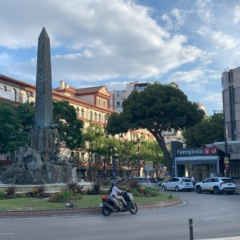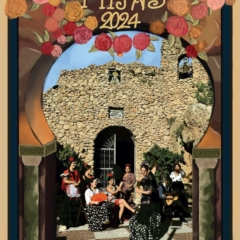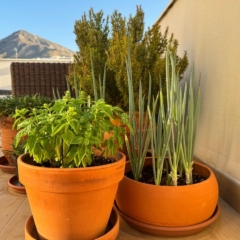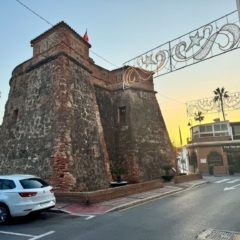The Beauty of Mijas Pueblo

Nestled in the picturesque landscapes of Andalusia, Mijas Pueblo is one of the pueblos blancos (white villages) of the Costa del Sol. High up in the Sierra de Mijas, 400 meters above sea level, this enchanting location fascinates visitors with its charm, slow pace, and preserved traditions.

White and Moorish architecture
The village’s most distinctive feature is its stunning white architecture, a characteristic inherited from the region’s Moorish past. The gleaming white facades not only create a sense of unity throughout the village but also serve a practical purpose, reflecting the sun’s rays and keeping the interiors cool during the hot summer months.
Wandering through the labyrinth of streets, visitors are treated to a kaleidoscope of colorful flowers on the walls and gardens, adding a touch of vibrancy to the palette.
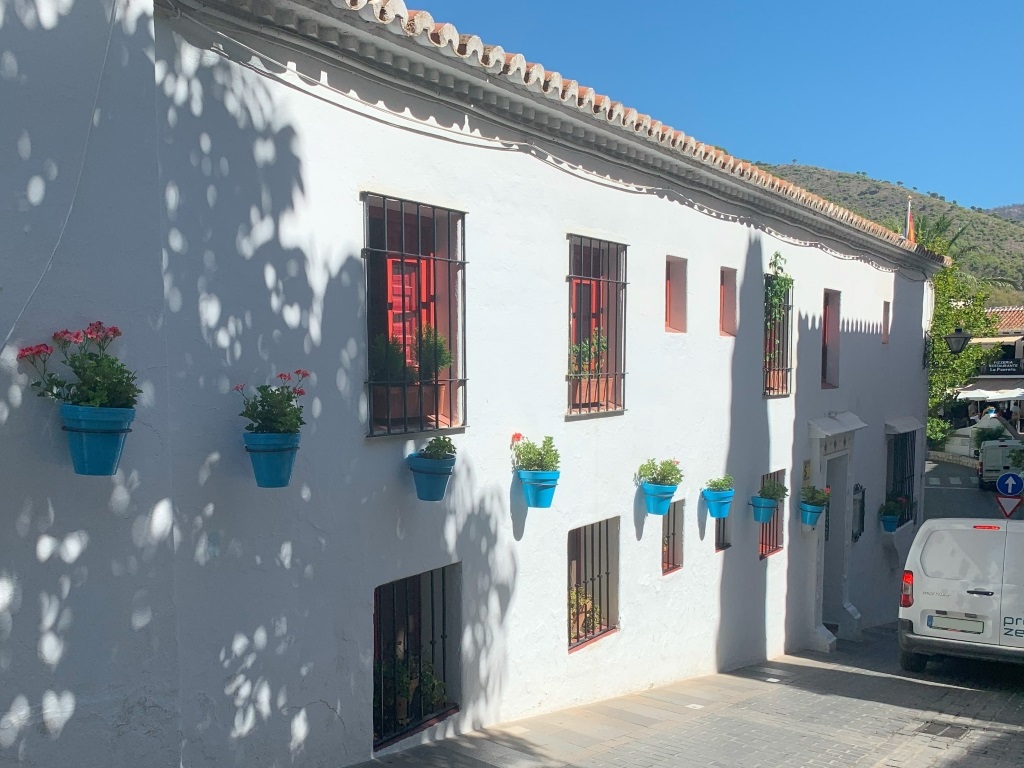
A bit of Mijas Pueblo’s past
The history of Mijas Pueblo dates back to ancient times, with evidence of human settlement found in the surrounding areas that dates as far back as the prehistoric era. The village’s strategic hilltop location provided a natural defense against invasions and attacks, which played a significant role in shaping its history. Over the centuries, Mijas Pueblo has been influenced by various civilizations, including the Phoenicians, Romans, and Moors.
During the Moorish rule, Mijas Pueblo flourished as an agricultural center, with the cultivation of olives, grapes, and almonds becoming the backbone of the local economy. The distinctive architecture and layout of the village showcase the Moorish influence, characterized by narrow streets, white-washed buildings, and charming courtyards adorned with vibrant flowers.
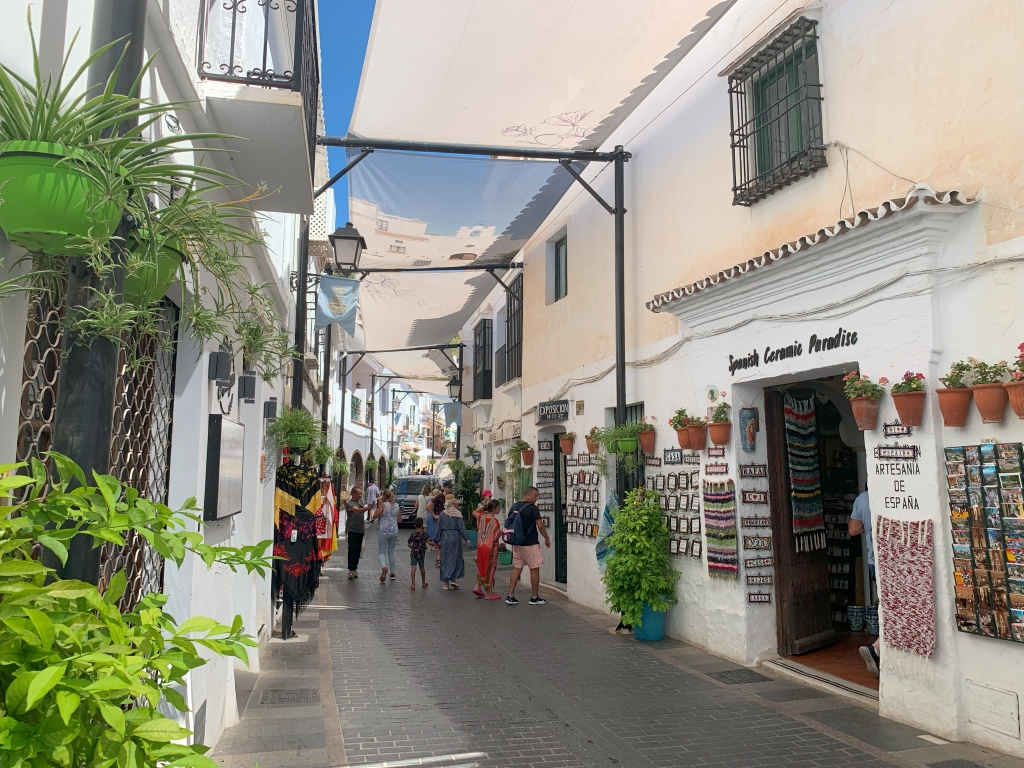
Places to see in Mijas Pueblo
Mijas Pueblo embraces its history with open arms, as evidenced by its well-preserved landmarks and cultural sites. Here is a small list of the main must-sees:
Church of San Sebastián
The Church of San Sebastián, a whitewashed beauty with a distinctive bell tower, dominates the central square. Dating back to the 17th century, this church is not only a place of worship but also a testament to the village’s enduring legacy.
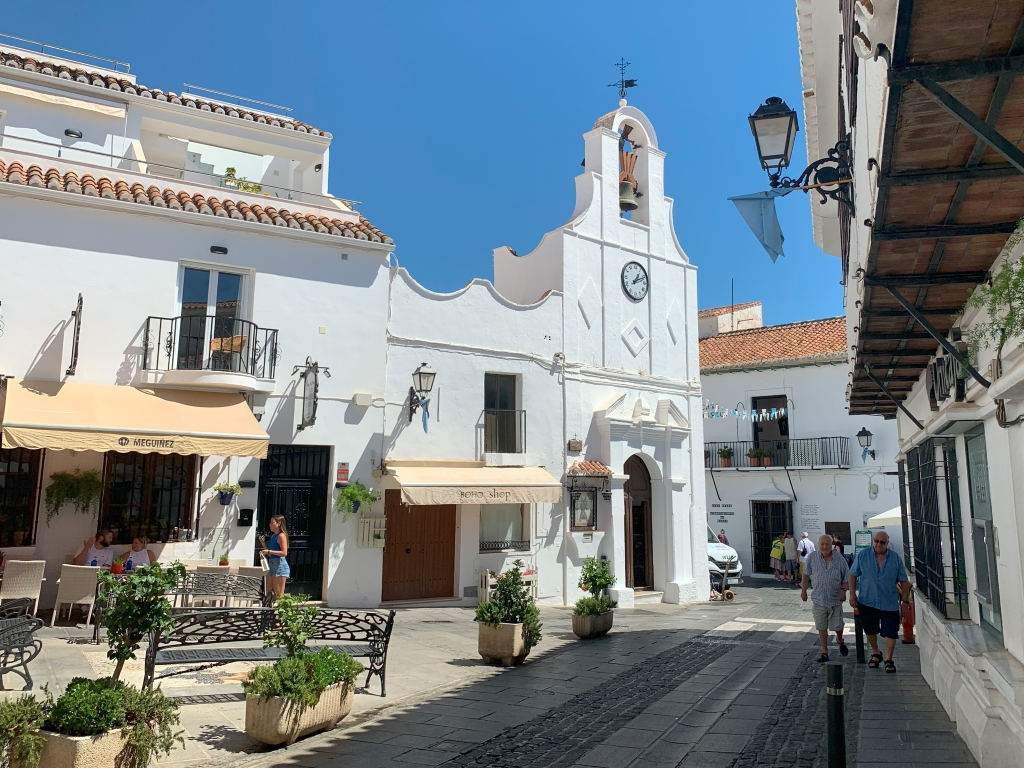
Plaza Virgen de La Peña
The Plaza Virgen de La Peña, another focal point, is an inviting square where locals and visitors congregate. Here, surronunded by cafes and restaurants, is the perfect spot to indulge in traditional Spanish cuisine while observing the unhurried rhythm of daily life. Take advantage of the wide-canopy trees for a welcoming shadow while you enjoy your meal and people-watch. 🙂
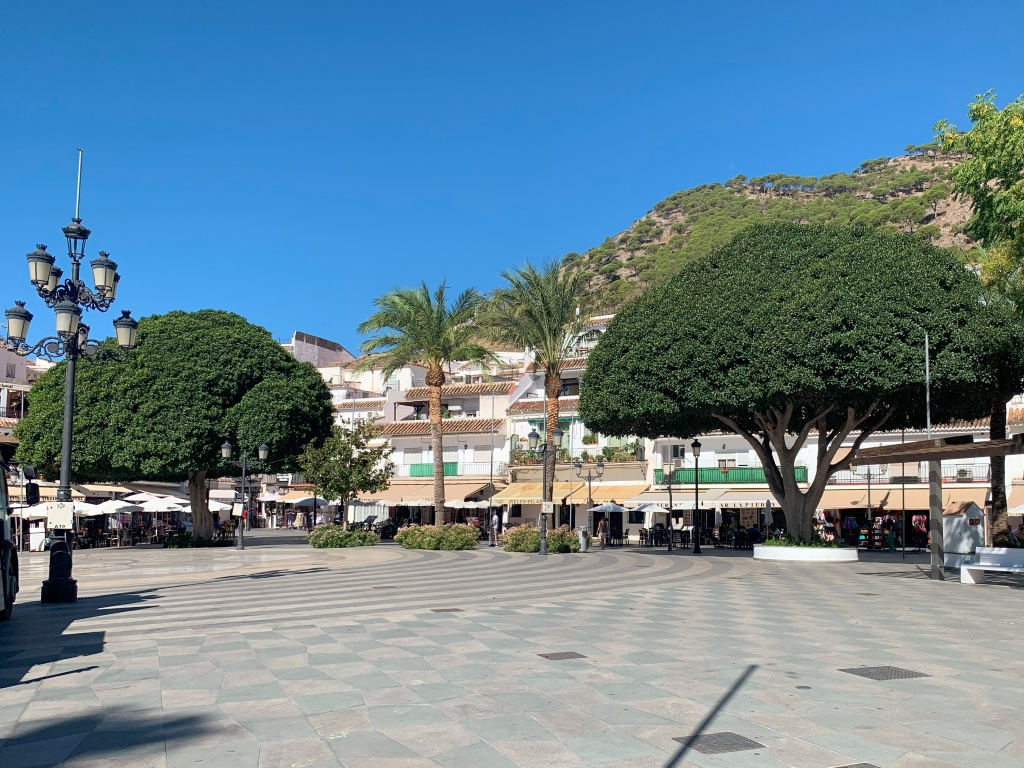
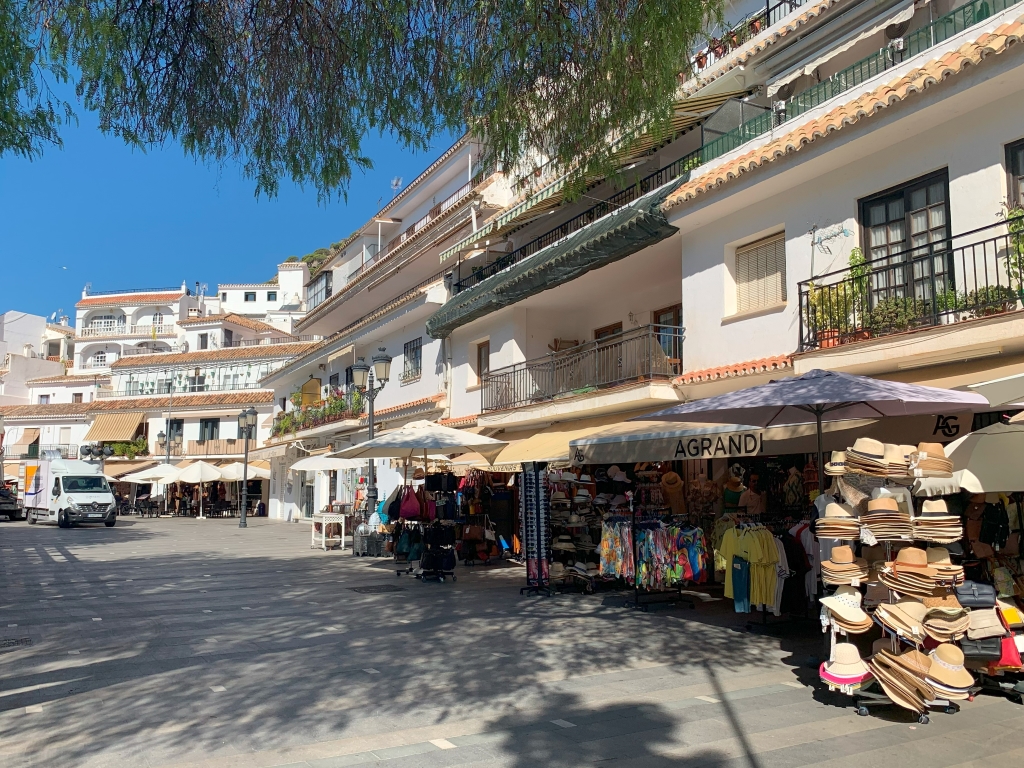
Hermitage of the Virgen de La Peña (Chapel of the Virgin of the Rock)
The Hermitage was dug from a rock by a Carmelite monk on the second half of the XVII century. In the hermitage is displayed the image of the Virgen de La Peña, patroness of Mijas. There is a legend that this image was found in 1568 by two children that were guided to it by a dove.
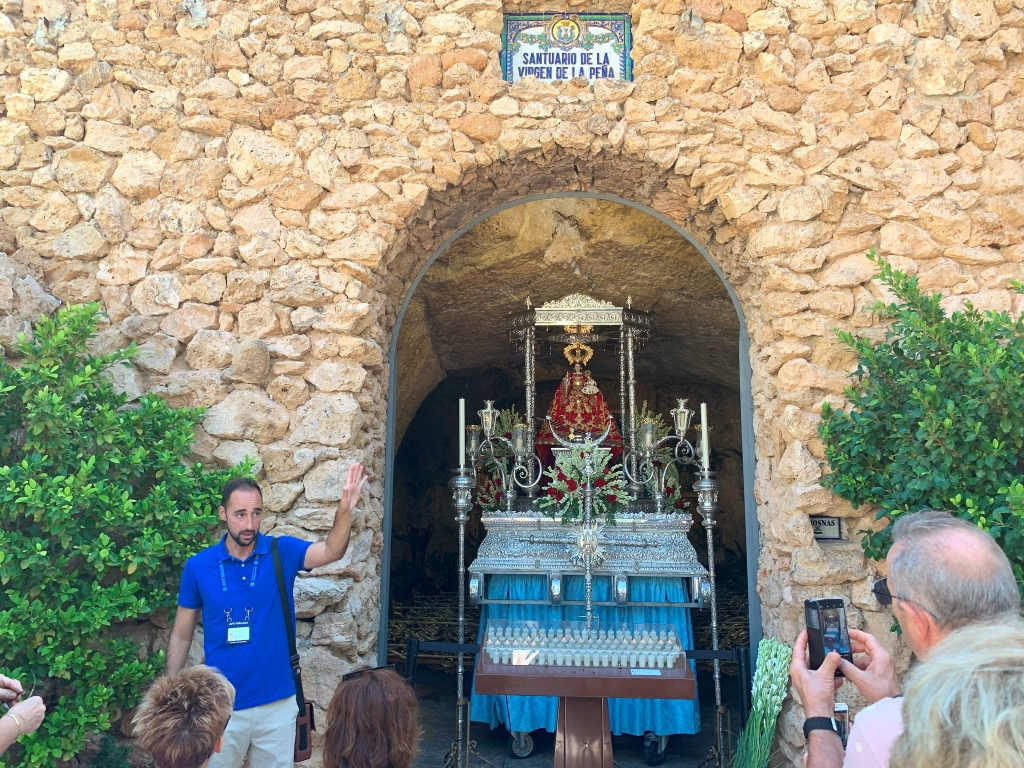

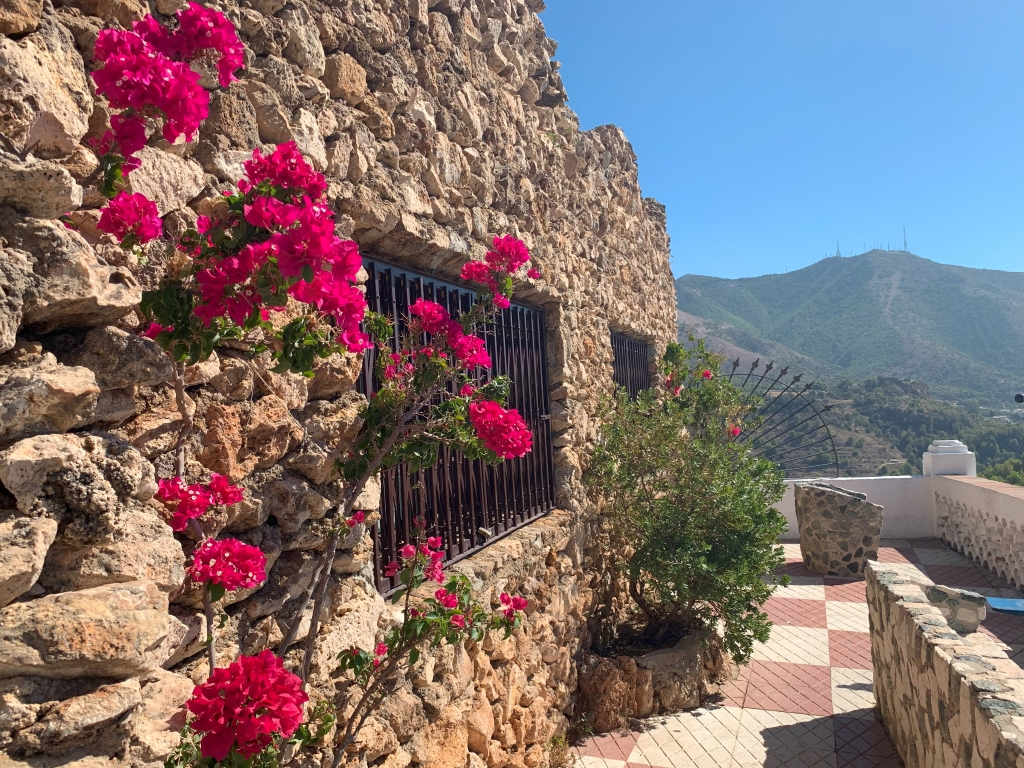
Jardines de la Muralla: a green paradise
The Jardines de la Muralla (Gardens of the Wall) is one of the main attractions of Mijas Pueblo. The city has managed to develop a gorgeous garden within the confinements of the old wall, taking advantage of the layered ground. Landscape artists did a masterpiece: they created a botanical route, which provides shade, moist and color to the area visitors explore while appreciating the amazing views from the Muralla. The area, that in a distant past held the defensive grounds of the city, today flourishes.

More than that, there are labels spread througout the garden, identifying several of the plants and providing information about each of the 141 numbered species. Visiting the gardens of the wall is an excellent program for both plant-lovers and for those who enjoy mesmerizing views.
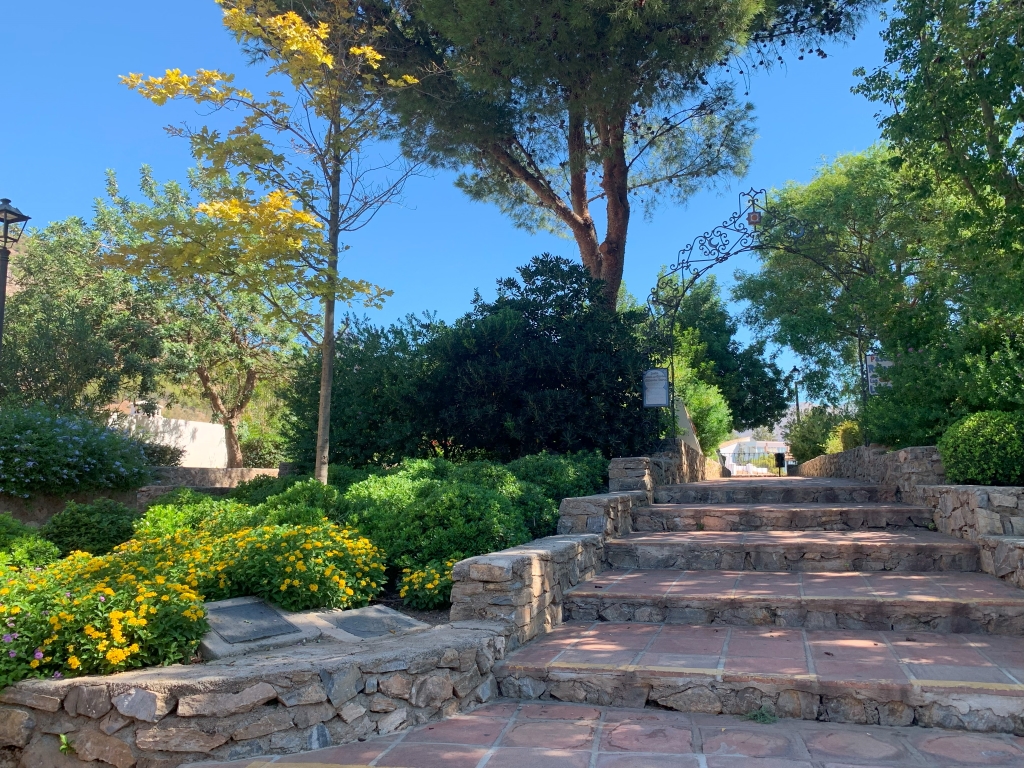
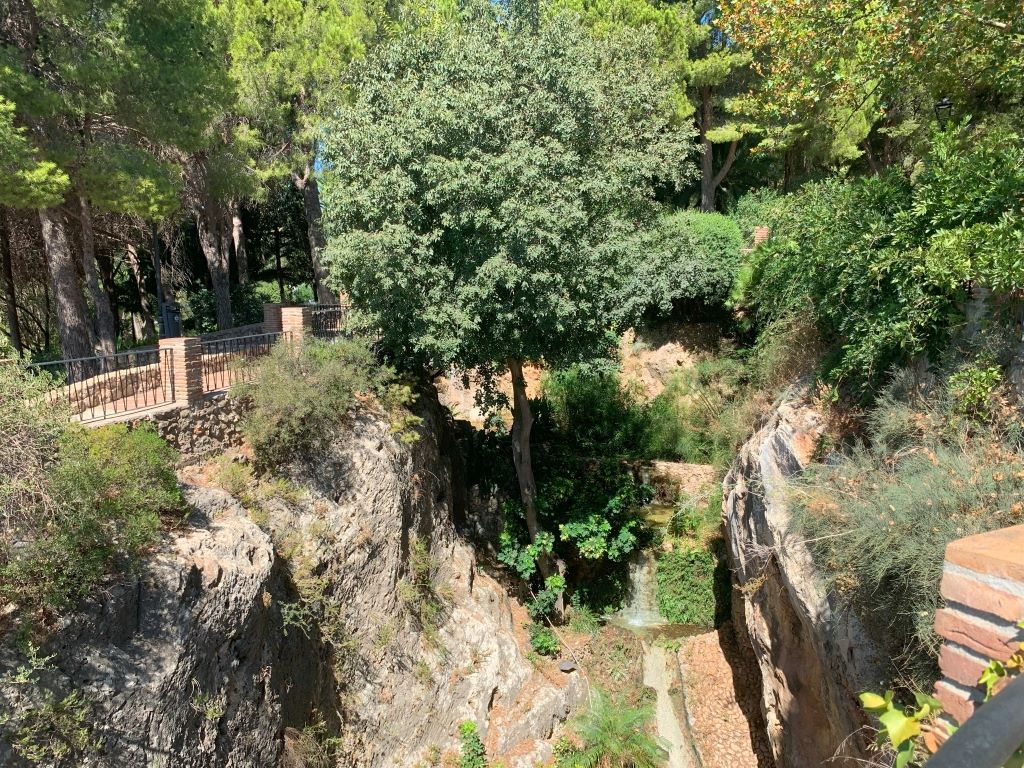
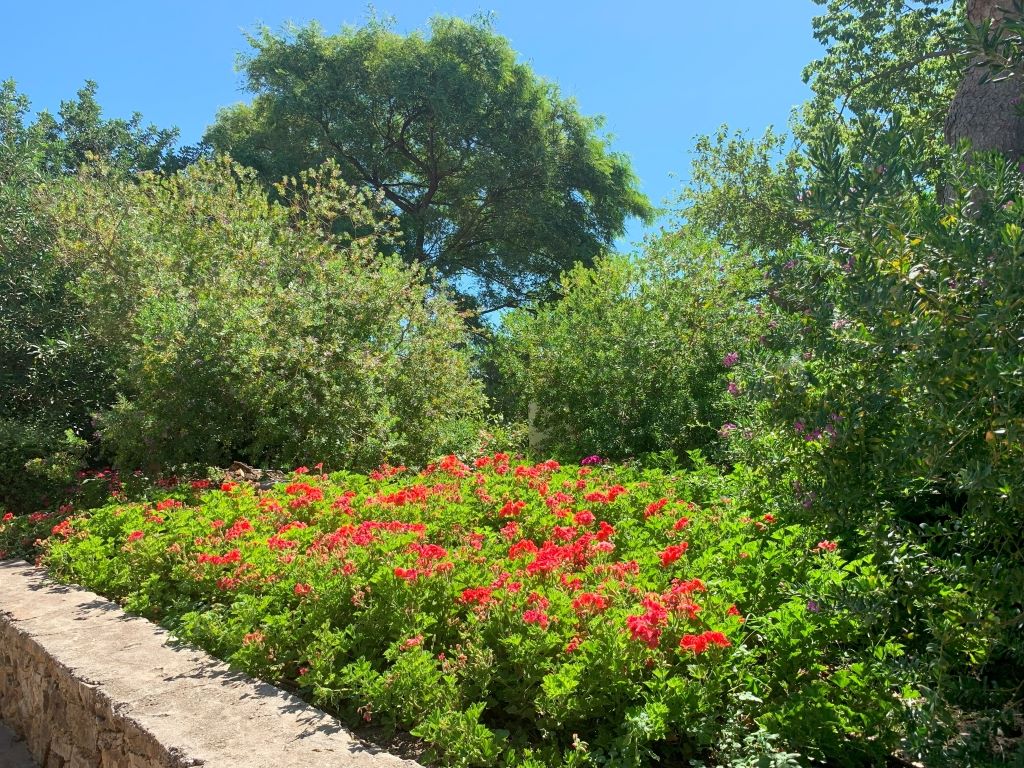
La Muralla
Besides the garden, the wall area has a playground, the Inmaculada Concepcion Church, the Municipal Auditorium and the bull ring of the city, as well as a very tranquil and inviting square with colorful fountains.


Outstanding views of the Costa del Sol
Beyond its architectural marvels, Mijas Pueblo boasts breathtaking vistas that stretch across the Mediterranean Sea and the surrounding hillsides. One of the village’s most celebrated viewpoints is the Mirador de la Muralla, (Wall Viewpoint). Standing there, one can soak in panoramic views while leaning against a piece of the original fortress wall that once protected the village.
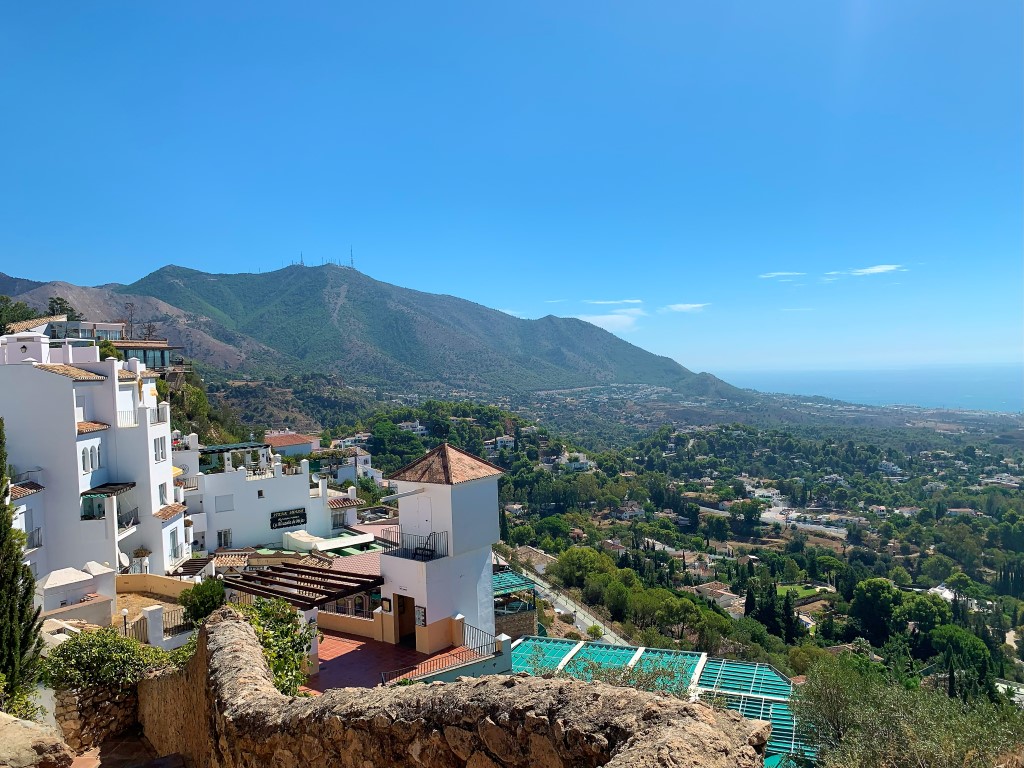
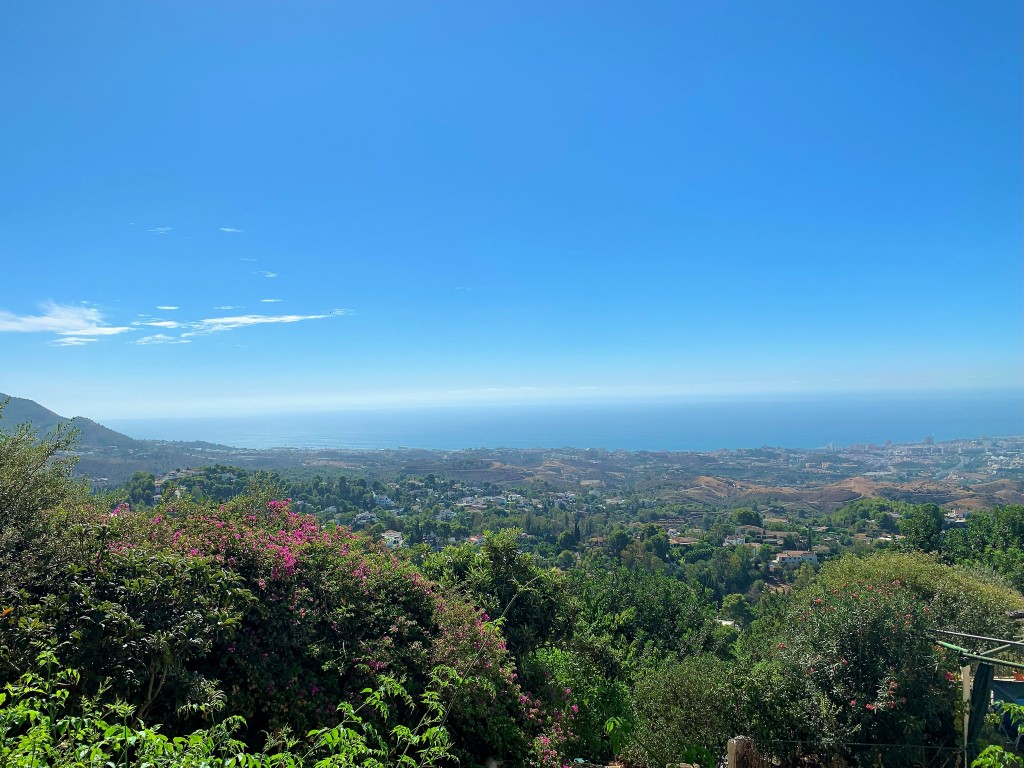
The several layers of Mijas Pueblo
Built on a hill, Mijas Pueblo is spread through several layers, almost as if the city were laying on large stairs. Much of the city stands along flat (or mostly flattened) levels, and the different levels connect through stairs or car ramps. The main roads run along the leveled steps.
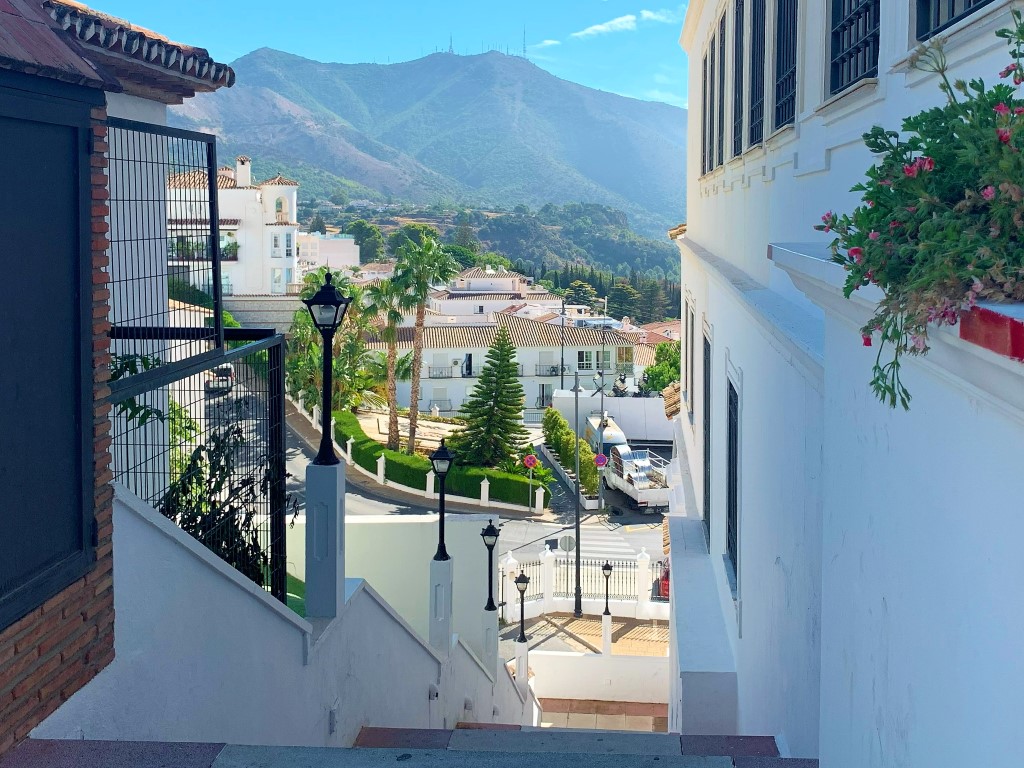
It is due to the main streets’ configuration – running parallel along different levels – that the views from within the city are also impressive:
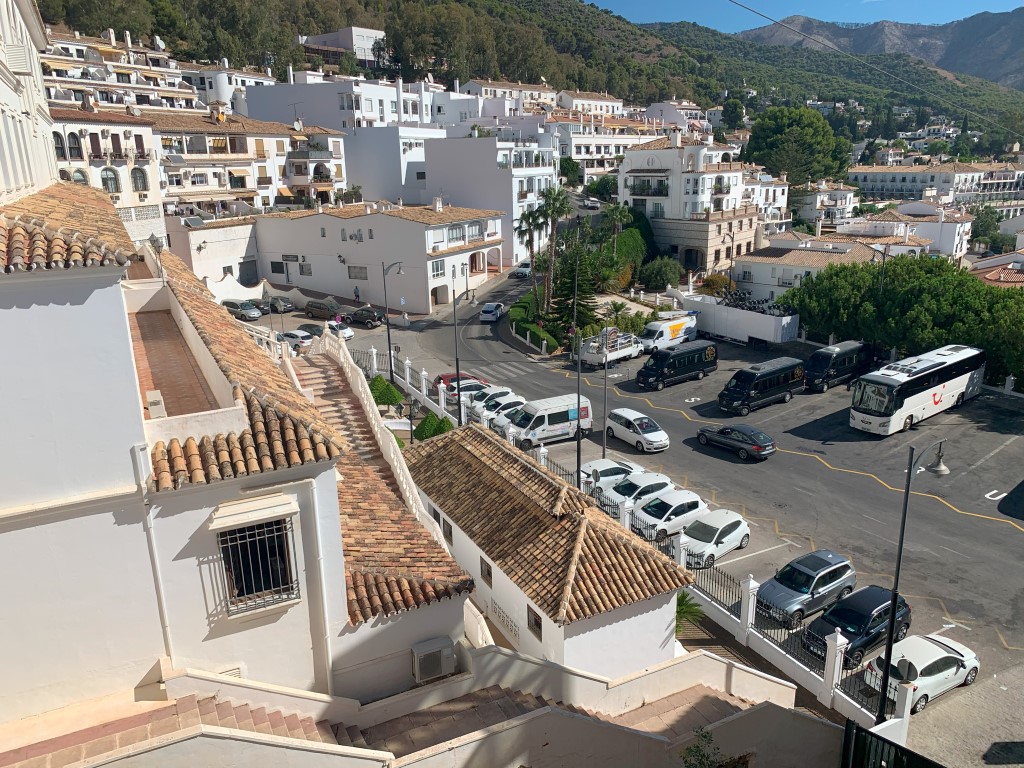

Slow pace of life
While tourism is an essential part of the local economy, the village exudes a sense of tranquility and intimacy that encourages visitors to slow down and savor every moment. Locals continue to uphold age-old traditions, and visitors are often treated to glimpses of daily life, as artisans crafting, cooks preparing traditional street foods, musicians playing or residents engaged in lively conversations on park benches.

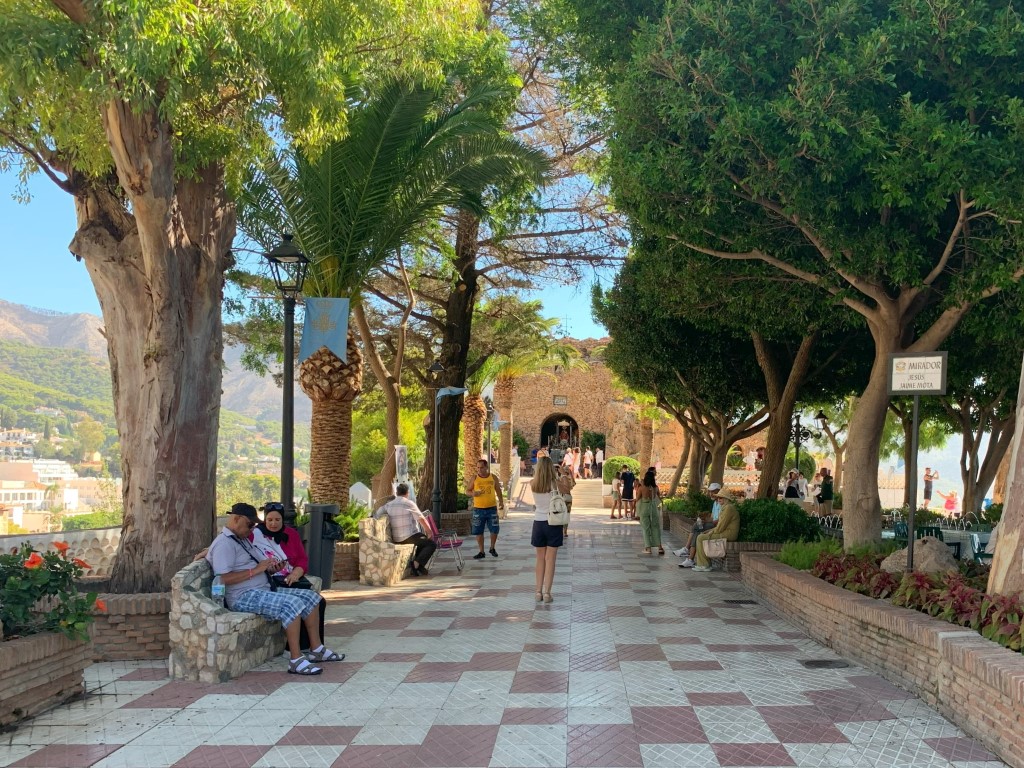
When to Visit
Choosing the right time to visit Mijas Pueblo can greatly enhance your experience. The village enjoys a Mediterranean climate, characterized by mild winters and warm summers. The shoulder seasons of spring (April to June) and fall (September to October) are particularly pleasant, as the weather is comfortable for exploring the village on foot and enjoying outdoor activities. Also in September, in the beginning of the month, happens the Feria of Mijas Pueblo, a one of a kind event that is a must see.
During the Feria de Mijas Pueblo, also know as Feria de La Virgen de La Peña, the city presents itself at its best, bright, sunny and full of flowers. 🙂 Check the program – both the original and the translation to English -, as well as images from previous years and the google map locations of the activities on the pages about the Feria de Mijas Pueblo 2023 and the Feria de Mijas Pueblo 2024! 😉
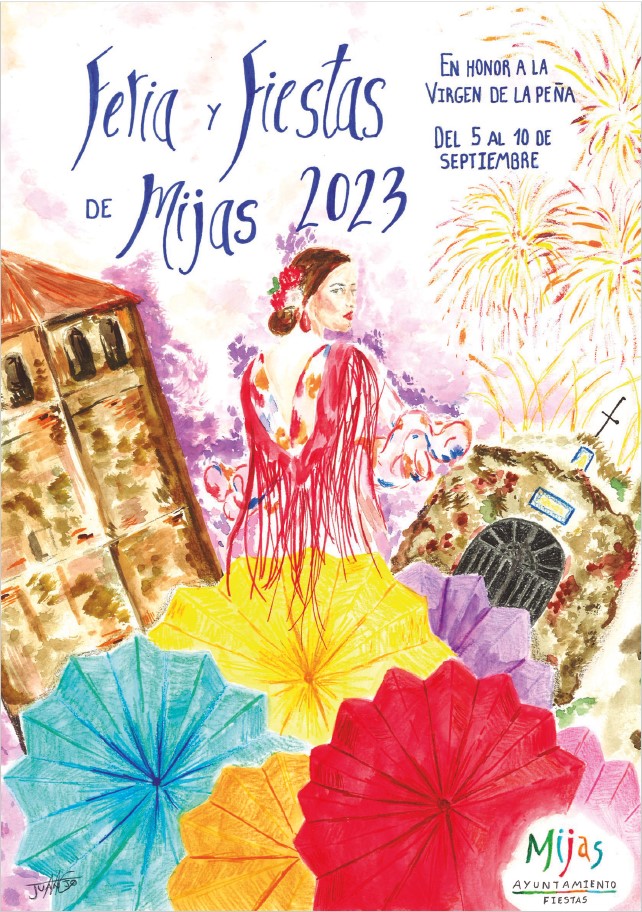
During the summer months (July to August), Mijas Pueblo experiences a surge in tourist activity due to the school holidays. While this period offers the advantage of longer daylight hours, it’s essential to be prepared for higher temperatures and larger crowds. The winter months (November to February) are quieter, making it an ideal time for travelers seeking a more peaceful escape.
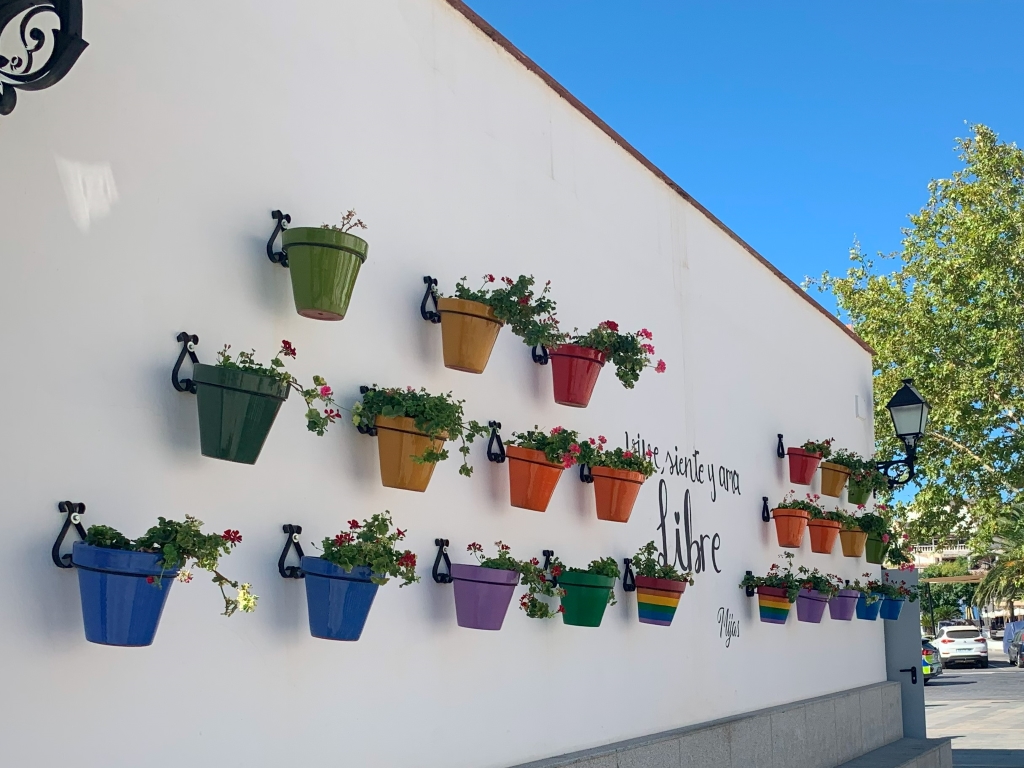
Where to stay
You can choose among several hotels and vacation rentals in Mijas Pueblo using the map below. Just fill your dates and the number of people coming to see the options availabe. 😉 See you in Mijas soon!
Visiting Mijas Pueblo
You can get to Mijas Pueblo by bus. Take bus line 112 if you are in Malaga; from Benalmadena or Torremolinos, bus lines 112 and 121 will take you to Mijas Pueblo. From Fuengirola, bus lines 122 or 221 will do it. There are no direct bus lines from other coastal towns; I guess the best way would be to get a bus to Fuengirola or Málaga, and then take the respective bus to Mijas Pueblo. Unfortunately, there is no train to Mijas.
Another way to get there is taking advantage of a not-guided (!) visit that includes car rides to Mijas Pueblo, Marbella and Puerto Banus – a lot cheaper than going to the 3 places by taxi. Once there, you can walk around Mijas on your own or you can be part of a guided visit that will take you to each of the interesting spots and tell more about Mijas history.
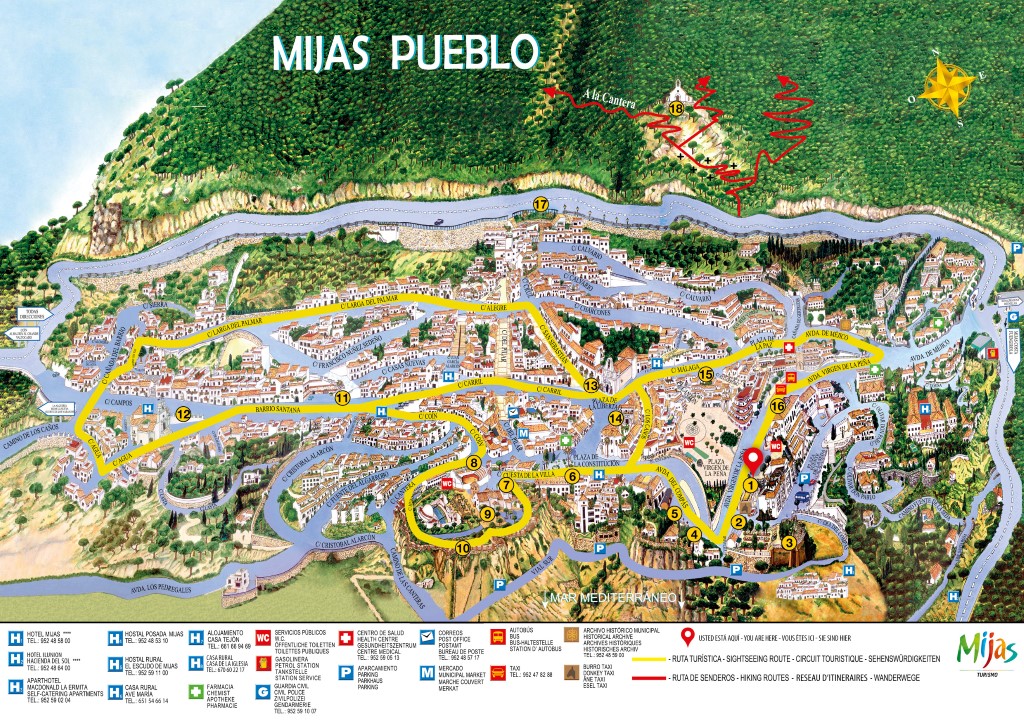
Related posts:
Transportation in the Costa del Sol – joyfully riding waves and wheels
Untangling the buses in the Costa del Sol
Conclusion
In a world that often seems to be racing against time, Mijas Pueblo remains a serene oasis where the past seamlessly intertwines with the present. With its charming architecture, awe-inspiring vistas, fantastic gardens and an atmosphere that encourages reflection, this Spanish village invites travelers to step off the beaten path and immerse themselves in the timeless beauty of Andalusia. Mijas Pueblo is more than a destination; it’s a journey back in time, a chance to appreciate the simple joys of life, and a reminder that sometimes the most remarkable experiences can be found in the most unassuming places.



